Can westerners really appreciate Chinese Art Works
Printed From: History Community ~ All Empires
Category: General History
Forum Name: Historical Arts and Architecture
Forum Discription: Discuss arts, literature, and architecture before the 19th century
URL: http://www.allempires.com/forum/forum_posts.asp?TID=13247
Printed Date: 12-May-2024 at 17:16
Software Version: Web Wiz Forums 9.56a - http://www.webwizforums.com
Topic: Can westerners really appreciate Chinese Art Works
Posted By: parthenon
Subject: Can westerners really appreciate Chinese Art Works
Date Posted: 10-Jul-2006 at 08:32
|
When reading recent Chinese history, I always think of the precious art works of Chinese ancients, for millions of them have been taken away to the West since the Opium War, like the British Museum, and many American ones. I know they are still there ,but i can visit them only through pictures in books. What a shame to a Chinese who has the interest and ability of appreciation.
To me, the whole set of a calligraphy is not only Chinese character, but also a way of conversation with the ancients, for the writer used his brush"drawed" his ideas, sometimes a poem, sometimes a letter,and sometimes an article of suggestion to the authority or even the emperor. I can feel from it, the happiness, the sorrow, all through his ways of writing or even "drawing"(writing fastly so that you will see the characters are flying on the paper).
As to Chinese paintings, they are totally different from western styles. They focus more on idealy-like than virtually-like, somewhat like the abstract paintings,but naturely different. Chinese painting has many sorts, among which, I prefer Mountain and River paintings, for they are especially tasteful according to traditional Chinese culture.
Just like oil paintings that are very much related to the Bible stories and cannot be easily tasted by easterners, I guess those Chineses art works scattering in Europe and US may not be very well understood or appreciated.
Those who know them value them ,otherwise neglect them, right?
As to millions of the treasures of the East, how much you will appreciate?
Thanks for your answer in advance. :) ------------- After all, tomorrow is another day.:) |
Replies:
Posted By: DayI
Date Posted: 10-Jul-2006 at 09:15
|
I never saw a chinese interior architecture, can you show some of it to us? this is a "typical" chinese architecture from outside, but whats the inside of it? 
------------- Bu mıntıka'nın Dayı'sı http://imageshack.us - [IMG - http://www.allempires.com/forum/uploads/DayI/2006-03-17_164450_bscap021.jpg - |
Posted By: parthenon
Date Posted: 10-Jul-2006 at 10:44
|
First, show you a few scenes of a typical Chinese Garden Architecture in Suzhou's Zhuozhen Garden. You may find it colourful, but actually that's the creative ideas of the builders, for the garden architecture not only focus on the major buildings like the pagodas, houses, courts, but also the senaries in four seasons. The architectures together with its surroundings are serve to entertain its masters, this kind of idea is also called "people be harmounious with the nature"(a traditional Chinese thought ). Give me more time , I will show you more.            ------------- After all, tomorrow is another day.:) |
Posted By: Cryptic
Date Posted: 10-Jul-2006 at 14:21
I have always enjoyed calligraphy. I like your point that it should be viewed as a drawing. Now, I know why Asian Calligrpahy is very different from western. Traditional western calligraphy values uniformity of the letters, Asian is far more individually expressive.
Though it helps to be of the same culture that produced the art, I tkink any individual, once educated can admire another culture's art. Chinese Calligraphy viewed as a drawing is similar to Christian Icons viewed as being written. Beyond the, at times, simplistic paintings are theological messages "written" into the painting.
Hopefully the more blatantly stolen art works that are held in western museums will be returned. This may happen as China's economic strength increases. Ironically, the west's possession of Chinese cultural art probably saved the works from destruction by Chinese during the Cultural Revolution. I think that many masterpeices are also in Tapei, Taiwan.
|
Posted By: flyingzone
Date Posted: 10-Jul-2006 at 15:07
|
Parthenon, the garden photos that you show us are absolutely stunning. ------------- |
Posted By: parthenon
Date Posted: 11-Jul-2006 at 03:25
History mocked us, and something just happened. Sometimes in the East, sometimes in the West; sometimes others destroyed us,while sometimes we destroyed ourselves. Who shall be blame for? What's really important is to well protect the remains. ------------- After all, tomorrow is another day.:) |
Posted By: parthenon
Date Posted: 11-Jul-2006 at 03:54
Continue with a set of photos of the Palace Museum in Beijing that could represent the most famous palace architecture in China.I think they can best describe the outer and interior looks and even some details about that ancient palace.
                         ------------- After all, tomorrow is another day.:) |
Posted By: Cryptic
Date Posted: 11-Jul-2006 at 21:56
Yes it did happen in the West as well. The French Revolution saw many examples of religous art being destroyed by revolutionaries. Likewise, extreme Anarchists fighting for the Republican side in the Spanish civil war destroyed many cultural treasures (mostly religous) as well. Fortunatly for France and Spain though, most of the destruction was not systematicaly ordered by the State. Rather, the destruction was carried out by small groups or individuals. The revolutionary governments may have tolerated the destruction (to a degree), but these governements soon fell.
In contrast, the the forces ordering the destruction of cultural heritage in China and Russia were part a well established state government. Once the destruction became de facto state policy, the loss in cultural heritage was far vaster than in France or Spain.
|
Posted By: parthenon
Date Posted: 14-Jul-2006 at 07:12
|
I do agree with you, Cryptic, but I don't want this topic to go too far.
Here I just tell you my own feeling, what you mentioned has already become scars to most Chinese people, reminding those who have experienced that period of it will make them speechless, and that painful feeling has been passed on to the younger generations. Maybe the pain will linger on through centuries. We seldom talk about it, but that doesn't mean we forget it. And I think the best way to heal China is to look forward , although with scars, and do more we can do. It is us, the younger generation to make up for it.
Well, shall we back to the topic? ------------- After all, tomorrow is another day.:) |
Posted By: Cryptic
Date Posted: 14-Jul-2006 at 08:53
Yes, by all means. I apologize. I should have realized earlier the vast difference between an individual (myself) who has an academic interest, but relatively little emotional ties to a sensitive topic and an individual such as yourself who has both knowledge and a very personal and very deep emotional tie to the same topic.
I am sure that most of the artiwork is under appreaciated. Especially paintings that have a subtle religous aspect to them. For example, abstract mountain scenes of the areas around Sian that show both mountians and Taoists. A westerner, with no knowlege of Taoism will only see an abstract mountain and a man. This westerner may also even conclude that the painting did not requre much skill when compared to Western realism and that the level of artistic skill is the same, it is just expressed in a different culturla context.
On the other hand, when the Imperial treasures toured USA, I was amazed by the level of interest. The treasures were also presented on closing week end with Chinese cultural events. I went to the museum that week end expecting to see only a few art students, local Chinese, or other students that were uhhmmm "encouraged" to attend by their teachers.
What I saw was amazing. There were thousands of people of all ages, ethnicities and backgrounds there. Several people told me that they had made several trips to the museum over the preceeding weeks.
|
Posted By: parthenon
Date Posted: 18-Jul-2006 at 08:24
|
Thanks, Cryptic.
What I show below is the masterpiece of Wan Xizhi in Jin Dynasty,
called Lan Ting Xu, which means the preface of Lan Ting gathering.
It is considered to be the most wonderful piece in the history
of Chinese calligraphy. The writer himself was an intellectual at
that time. He left us with his calligraphy as well as a brand-new
vision of apprieciation.
I love this piece very much.
 ------------- After all, tomorrow is another day.:) |
Posted By: Cryptic
Date Posted: 19-Jul-2006 at 15:45
|
Double Post |
Posted By: Cryptic
Date Posted: 19-Jul-2006 at 15:48
|
What is the text about? This will help in my apreciation for the work. I have a book about calligraphy in Modern China and am happy that the classical style is being studied in modern times. What is your favorite dual Calligraphy / Brush painting work? |
Posted By: red clay
Date Posted: 20-Jul-2006 at 06:58
|
Parthenon- could you explain for us the stampings that are on that Caligraphic piece? Who did them and why? I think that would also help us to further appreciate this work. ------------- "Arguing with someone who hates you or your ideas, is like playing chess with a pigeon. No matter what move you make, your opponent will walk all over the board and scramble the pieces". Unknown. |
Posted By: parthenon
Date Posted: 23-Jul-2006 at 10:51
|
To red clay, I am glad that you have noticed the red stamps on this piece, yes, they are important in the appreciation of Chinese calligraphy.
The following photo may show the stamps much clearer.
Those stamps were pressed by its collectors of various dynasties, and through centuries, the stamps have become an integral part of the calligraphy.
For example, you can see from this photo clearly the stamps of Emperor Qian Long of Qing Dynasty, he was very fond of it and pressed several stamps of collection of him, like The Treasure Of Qian Long (see the oval stamp on the top left between verticle line 2 and 3), The Precious Piece Of San Xi Tan (see the squared one below), Qin Long Favoured (see the circle stamp on the top right between the last verticle line 3 and 4), etc.
This piece has also been collected by officials and nobles in history, and they all left their stamps on it. To name a few, those collectors are including Emperor Tang Tai Zong of Tang Dynasty, Shaoxin government in Zhejiang Province when in Song Dynasty, Guo Tianxi in Yuan Dynasty, Yang Shiqi, Wang Ji and Xiang Yuanbian in Ming Dynasty,Cao Rong in Qing Dynasty, and then went to the Palace Museum since Qing Dynasty, and it is still there.
So, with these stamps, you may have the clue of how this great piece being passed on through the history. Those stamps are telling you stories of their own.
However, I should mention Emperor Tang Tai Zong of Tang Dynasty. He was a calligraphy-lover, and especially fond of Wang Xizi's writings. He tried all sorts of ways to find the real piece of Lan Ting Xu, and then got it from a folk collector. He loved this piece so much that he burried it with him, and left us with three editions of immitation of it, all were done by famous writer and officials at that time. So, what we see here is the most renowed edition written by Feng Chensu of Tang Dynasty. Although we lost the real one, this piece is considered highly throughout the history, and is still ranked No. 1 in the history of Chinese Calligraphy.
http://www.maywind.org/blog/uploadfile/ltx.jpg">
 ------------- After all, tomorrow is another day.:) |
Posted By: parthenon
Date Posted: 24-Jul-2006 at 09:35
|
This Chinese painting was done by Wen Zhengming in Ming Dynasty, one of the four most renowed artists and intellectuals at that time. It describle the gathering of the intellectuals in Lan Ting(Gloriette) in Jin Dynasty(353 A.D.).
The painter read Lan Ting Xu and also other poems and essays of the writers in Lan Ting Gathering, and used his imagination to recreate a picture of that scene for us.
There are other paintings about Lan Ting Gathering, but this one is more popular and more specificly done. It is also a representative piece of Wen Zhenming.
You may find there is a creek in this picture, and people were sitting around it, doing a ritual. Yes, it is a traditional custom of China. When in March of Chinese rural calendar, peple will play with the water to make wishes and get rid of bad fortunes. However, when this ritual came to those intellectuals, they made it even nobler, like putting a cup of drink into the water and let it flow from high to low level, and it passed by one person, that man should make a poem or essay, otherwise he must drink up.
So now you can see, in what kind of situation that essay of Lan Ting Xu was written. It was full of spirit and of high mood, when people sitting in the mountains and rivers , and enjoying gathering with friends, one must be very delighted.
 (明)文征明 《兰亭修禊图》
Gathering In Lan Gloriette, by Wen Zhengming (1470-1559), Ming Dynasty ------------- After all, tomorrow is another day.:) |
Posted By: red clay
Date Posted: 24-Jul-2006 at 18:20
|
The Japanese adopted this device also, each owner of the piece adding his stamp, in that culture added to the value as it was a running provenance [history] I have seen several works, [can't remember Chinese or Japanese] where the artwork has become secondary to the history preserved in the stampings, the original work being almost obscured by the stamps. ------------- "Arguing with someone who hates you or your ideas, is like playing chess with a pigeon. No matter what move you make, your opponent will walk all over the board and scramble the pieces". Unknown. |
Posted By: parthenon
Date Posted: 25-Jul-2006 at 08:06
|
What you said is a point, but as a matter of fact, stamps are used as a part of calligraphy artwork, for they themselves are types of Chinese characters, most of which are more ancient types of calligraphy than that of the brush written ones.
Also, it depends on in which respect you perceive a piece of calligraphy work. As a calligraphy-lover, one's eyes will first focus on the majority of a piece------that is the brush written characters, and then move on to the stamps, their shapes, their contents, and their artistic tastes.
As you said that too many stamps may made calligraphy itself obscure to us, I think that might happen when a beginner uses too many stamps of his or her own and impresses them everywhere. However in most cases, this will not happen, as stamps have their regular places in a piece of work.
If you see some recent or contemporary works, you will find the rules of how to use stamps, like on the top left(where an article begins) between the first and second Chinese characters, on the right side below the writer's name,etc.
Although Lan Ting Xu does have many stamps, we don't consider it is being obscured by them, because those collectors followed the rules of stamping. You can see most of the stamps are on the margins of both left and right sides, where there is no Chinese characters, these places are allow to stamp. Secondly, you will find a few stamps are impressed at the beginning lines (left 2 to3) and ending lines (right 3 to 4), that's also reasonable for a long piece. Thirdly, you may find in the middle of the piece there are five stamps impressed on the linkage of two pieces of paper(for in ancient times there were no such long piece of paper to write such a long article, so they pasted two pieces of paper together), that's also necessary to convince us of the integrity of it, sometimes the writer him or herself will stamp there instead of the collectors.
I wish my answer will satisfy you. ------------- After all, tomorrow is another day.:) |
Posted By: flyingzone
Date Posted: 25-Jul-2006 at 15:01
|
Parthenon, you seem to be quite knowledgeable in traditional Chinese art. Are you equally knowledgeable in traditional Chinese music? Long time ago, I started a thread entitled "Did Confucianism limit the potential of Chinese music?" on the East Asian forum but did not get any response from anyone. http://www.allempires.com/forum/forum_posts.asp?TID=10083 - http://www.allempires.com/forum/forum_posts.asp?TID=10083 I was wondering if you have any opinion on this subject. Perhaps when talking about Chinese music, I could have asked the same question you're asking here: "Can Westerners really appreciate Chinese music?" My answer to this question, as implied in the post that I made on that thread, is a tentative "no" due to the intrinsic difference in the nature of Chinese and Western (for Western I mean "European") music.------------- |
Posted By: parthenon
Date Posted: 28-Jul-2006 at 11:43
|
to flyingzone, as to Chinese traditional music, I'm afraid I cannot give you any specific ideas of my own, for I'm a layman in that area. I've tried your link and saw your statements, they are already very profesional, as i see it. What I know about, you already have mentioned.
But your question of "Did Confucianism limit the potential of Chinese music?" according to my knowledge, cannot have a definite yes or no answer. Because when you said "limit", that was compared with seven agents of the western music. If there were a kind of music that contained more than seven agents, would you say that it would be more harmonic because of it's philosophy?
As for partly yes, because Confuciansim as a major philosophy did have great influence on Chinese culture, and of course on traditional Chinese music, and that leads to the pentagonic nature of it. I've listened to many, though as you perceive lack of harmonic density, I feel quite natural and smooth with them. Maybe I was born to accept this harmonic because I'm a Chinese. ------------- After all, tomorrow is another day.:) |
Posted By: Killabee
Date Posted: 12-Oct-2006 at 16:59
|
I really like Tang and Song period Architecture. They were mostly composed of two color only: red and white or brown and white. Plain and simple. The modern post-Ming architecture are strongly influenced from the Northern nomadic tribes. Notably the Forbidden City, although it was initally built by the second Ming Emperor, Chu Ti. When the Manchus usurped Beijing, they made tremendous changes in the Palace to accommodate to their liking. However, you can rarely find any Tang and Song period Architecture in China now in these days. Most of them are destroyed due to long period of warfare. The only place you find them is not in China but in Japan. The Imperial Palace and Temple in Nara and Kyoto are exactly modeled after the Tang Dynasty period. Ironically, they were nearly destroyed by the US bombers during the World Word II if it wasn't the Chinese architect (forgot his name) who petitioned to US government for sparing them. |
Posted By: Killabee
Date Posted: 12-Oct-2006 at 18:21
|
Recently, there are movement of revivalization of Tang period architecture as most people agree that they are the true beauty of Chinese culture.
Below are the pictures of the newly built Chi Lin Nunnery in Hong Kong.
The Temple is entirely based upon Tang era style. Japanese consultants were hired to provide information as to building Tang era architecture since it has been long gone in China but preserved in Japan.
|
Posted By: flyingzone
Date Posted: 12-Oct-2006 at 19:52
|
Beautiful. Unfortunately you can see those typical Hong Kong skyscrapers in the background ... ------------- |
Posted By: Killabee
Date Posted: 12-Oct-2006 at 21:03
Well, this is how Hong Kong is like. 7 millions people cramming in 425 square miles.  |
Posted By: Cryptic
Date Posted: 15-Oct-2006 at 09:52
I hope the revial of traditional architecture continues in China. A global "mono architectural style" would be horrible. Is the nunnery for Buddhist, Taoist / Confucian or Christian nuns?
|
Posted By: Gun Powder Ma
Date Posted: 15-Oct-2006 at 14:22
I agree. But this retro style is neither particularly cost- nor space effective and certainly not very functional. And as soon as you wanna build higher rising buildings you have make compromises which take you quite far from the original Tang style: left side traditional style, right side appartment buildings: http://www.nwsh.com.hk/eng/home/images/photo-services-full08.jpg - http://www.nwsh.com.hk/eng/home/images/photo-services-full08.jpg http://images.google.de/imgres?imgurl=www.nwsh.com.hk/eng/home/images/photo-services-full08.jpg&imgrefurl=www.nwsh.com.hk/eng/home/photogallery_services8.asp&h=2866&w=3586&sz=1709&hl=de&start=3&tbnid=f54908k9409rPM:&tbnh=120&tbnw=150&prev=/images%3Fq%3DChi%2BLin%2BNunnery%26ndsp%3D18%26svnum%3D10%26hl%3Dde%26lr%3D%26sa%3DN - |
Posted By: Preobrazhenskoe
Date Posted: 15-Oct-2006 at 15:24
|
Don't get me wrong, it's a shame that mainland China is lacking in a lot of its original artwork, now located in places like Taiwan, Japan, Europe, USA, South America, etc. However, being a Westerner, I think you're wrong about the notion of Westerners being unable to appreciate Eastern Art, its significance, and where it is derived from. Take a look at the Charles Lang Freer Gallery, part of the Washington D.C. Smithsonian Museum in the States.
http://www.asia.si.edu/collections/chineseHome.htm - http://www.asia.si.edu/collections/chineseHome.htm
http://www.asia.si.edu/collections/results.cfm?group=Chinese%20Art - http://www.asia.si.edu/collections/results.cfm?group=Chinese%20Art
This is an enormous collection of Chinese art, ranging from the Neolithic period (pre-2100 BCE) all the way up to the end of the Qing Dynasty in the beginning of the 20th century. Paintings, calligraphy, stoneware, porcelain, earthenware vases, bronzeware, iron work, silver-smithing and gold treasure, lacquerware works and furniture, wooden tapestries, you name it, the gallery's got it.
All of this was originally purchased by one Charles Lang Freer of Detroit, when it made its way to the States via Japan, where most of these items were kept reserved in Japan for centuries before making it to the U.S.
Eric ------------- |
Posted By: Guests
Date Posted: 15-Oct-2006 at 21:12
|
Can westerners appreciate Chinese art works? Of course they can! Chinese civilization and culture may seem very different in the outside, but looking at it with care we find the same internal similaties of all mankind. Of course there are obstacles in the way. First, one must know the codes of the culture, and to get certain knowledge of its values, its language and history. But art is beauty and harmony, and that is universal. If something is pretty, any human being has the hability to capture it. Pinguin |
Posted By: Cryptic
Date Posted: 15-Oct-2006 at 21:12
Yes, I can see your points. I will not be surprised if full "retro style" is limited to religous structures and the custom designed mansions of the wealthy. You can imagine how much the property for the "retro" nunnery cost in Hong Kong
|
Posted By: Preobrazhenskoe
Date Posted: 16-Oct-2006 at 13:54
|
http://en.wikipedia.org/wiki/Freer_Gallery_of_Art -
http://en.wikipedia.org/wiki/Freer_Gallery_of_Art
http://www.asia.si.edu/collections/results...p=Chinese%20Art - http://www.asia.si.edu/collections/results...p=Chinese%20Art Here's a long gallery of pics from the Charles Lang Freer Gallery, as well as other assorted pics from other galleries and places in China.
SIMPLE DIRECTIONS: Don't bother clicking on the thumbnails themselves, just click on the web links below the written description of each thumbnail pic, and it will bring you to a pop-up window where the large-size image of that pic is! Enjoy! http://thumbsnap.com/v/KJMa1C68.jpg"> 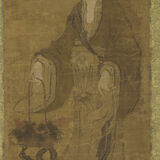 This painting entitled Guan-Yin and the Fish Basket, 15th century AD, Ming Dynasty painting, anonymous painter. http://thumbsnap.com/vf/KJMa1C68.jpg - http://thumbsnap.com/vf/KJMa1C68.jpg http://thumbsnap.com/v/DGBz5OkU.jpg"> 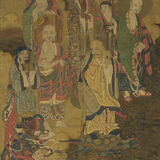 This painting is entitled, a Group of Lohan Floating Upon Waves and Clouds, painted in 1610, Ming Dynasty http://thumbsnap.com/vf/DGBz5OkU.jpg - http://thumbsnap.com/vf/DGBz5OkU.jpg http://thumbsnap.com/v/lPLuTzOs.jpg"> 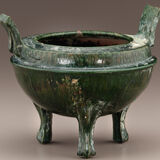 Eastern Han Dynasty Ding Tripod Vessel, earthenware with copper-green lead-silicate glaze, 1st century AD http://thumbsnap.com/vf/lPLuTzOs.jpg - http://thumbsnap.com/vf/lPLuTzOs.jpg http://thumbsnap.com/v/mJIDI6fO.jpg"> 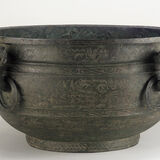 Eastern Zhou Dynasty Basin (chien), bronze-cast vessel, 5th century BC http://thumbsnap.com/vf/mJIDI6fO.jpg - http://thumbsnap.com/vf/mJIDI6fO.jpg http://thumbsnap.com/v/tOMsw9E6.jpg"> 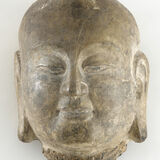 Northern Qi Dynasty, Head of the Buddhist Disciple Ananda, limestone, late 6th century AD http://thumbsnap.com/vf/tOMsw9E6.jpg - http://thumbsnap.com/vf/tOMsw9E6.jpg http://thumbsnap.com/v/Aczv8GMw.jpg"> 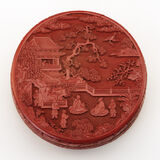 Ming Dynasty Red-Lacquer Box, Yongle Reign Period, 1403-1424 AD http://thumbsnap.com/vf/Aczv8GMw.jpg - http://thumbsnap.com/vf/Aczv8GMw.jpg http://thumbsnap.com/v/8vl6NRHe.jpg"> 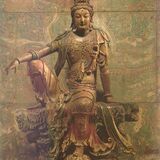 Northern Song Dynasty Statue of Guanyin, early 12th century AD http://thumbsnap.com/vf/8vl6NRHe.jpg - http://thumbsnap.com/vf/8vl6NRHe.jpg http://thumbsnap.com/v/gOrwAApz.jpg"> 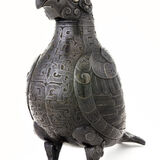 Eastern Zhou Dynasty, Zoomorphic-Bird Ritual Vessel, bronze with gold inlay, circa 500 BC http://thumbsnap.com/vf/gOrwAApz.jpg - http://thumbsnap.com/vf/gOrwAApz.jpg http://thumbsnap.com/v/asicuErH.jpg"> 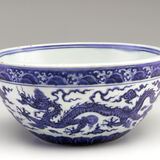 Ming Dynasty Porcelain Bowl, cobalt colorless glaze, Emperor Xuande period (1426-1435 AD) http://thumbsnap.com/vf/asicuErH.jpg - http://thumbsnap.com/vf/asicuErH.jpg http://thumbsnap.com/v/qBRFqG4b.jpg"> 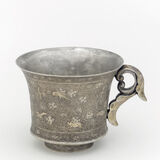 Tang Dynasty Silver Cup, intricate silver-smithed designs of animals and flower motif, early 8th century AD http://thumbsnap.com/vf/qBRFqG4b.jpg - http://thumbsnap.com/vf/qBRFqG4b.jpg http://thumbsnap.com/v/1U9BpF66.jpg"> 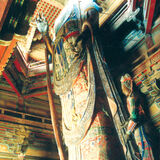 The towering Liao Dynasty Guanyin Painted-Clay Statue of Dule Temple, 984 AD http://thumbsnap.com/vf/1U9BpF66.jpg - http://thumbsnap.com/vf/1U9BpF66.jpg http://thumbsnap.com/v/TLdkPud0.jpg"> 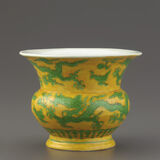 Ming Dynasty Porcelain Slops Jar (Zhadou), Zhengde Reign, 1506-1521 AD http://thumbsnap.com/vf/TLdkPud0.jpg - http://thumbsnap.com/vf/TLdkPud0.jpg http://thumbsnap.com/v/n4asi5ym.jpg"> 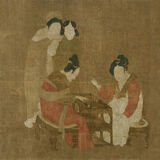 Ladies Playing Double-Sixes, original by Zhou Fang (lived c. 730-800 AD), late 10th - early 11th century remake, Song Dynasty http://thumbsnap.com/vf/n4asi5ym.jpg - http://thumbsnap.com/vf/n4asi5ym.jpg http://thumbsnap.com/v/VHHEhwFZ.jpg"> 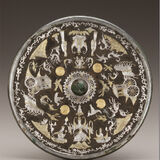 Bronze Mirror, gold and silver inlay design of horse-riding chariots, Buddhist figures, and flying animals, dated from 220 - 589 AD, during the divisionary period http://thumbsnap.com/vf/VHHEhwFZ.jpg - http://thumbsnap.com/vf/VHHEhwFZ.jpg http://thumbsnap.com/v/PWEQrdLS.jpg"> 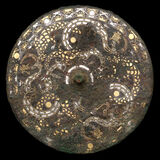 Eastern Zhou Dynasty Bronze Mirror, gold and silver inlay designs of intertwined flying dragons, 5th-4th century BC, Warring States Era http://thumbsnap.com/vf/PWEQrdLS.jpg - http://thumbsnap.com/vf/PWEQrdLS.jpg http://thumbsnap.com/v/MQZxPPB7.jpg"> 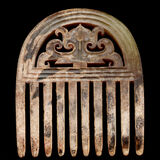 Eastern Zhou Dynasty Jade-carved Hair Comb (Jincun), 5th-4th century BC http://thumbsnap.com/vf/MQZxPPB7.jpg - http://thumbsnap.com/vf/MQZxPPB7.jpg http://thumbsnap.com/v/Nmgm58cQ.jpg"> 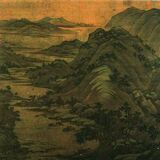 Landscape Painting by Dong Yuan, 5 Dynasties and 10 Kingdoms Period, 10th century AD http://thumbsnap.com/vf/Nmgm58cQ.jpg - http://thumbsnap.com/vf/Nmgm58cQ.jpg http://thumbsnap.com/v/UwO68FPI.jpg"> 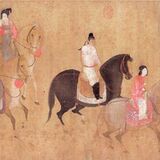 Lady of Guo On a Spring Outing, by Zhang Xuan, 8th century AD, Tang Dynasty http://thumbsnap.com/vf/UwO68FPI.jpg - http://thumbsnap.com/vf/UwO68FPI.jpg http://thumbsnap.com/v/9X7i0dnb.jpg"> 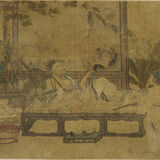 A Man Taking His Ease, painting on silk scroll, first half of 15th century AD, late Yuan Dynasty http://thumbsnap.com/vf/9X7i0dnb.jpg - http://thumbsnap.com/vf/9X7i0dnb.jpg http://thumbsnap.com/v/C55cgS9h.jpg"> 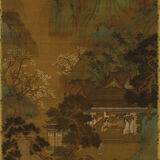 The Hall of Precious Paintings, originally by Qiu Ying, 17th century remake http://thumbsnap.com/vf/C55cgS9h.jpg - http://thumbsnap.com/vf/C55cgS9h.jpg ------------- |
Posted By: Preobrazhenskoe
Date Posted: 16-Oct-2006 at 13:55
http://thumbsnap.com/v/v0eFcfjn.jpg">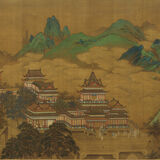 Peach Festival of the Queen Mother of the West, early 17th century Ming Dynasty http://thumbsnap.com/vf/v0eFcfjn.jpg - http://thumbsnap.com/vf/v0eFcfjn.jpg http://thumbsnap.com/v/elinxAg8.jpg"> 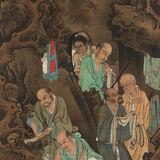 The Original and well-preserved painting of Luohan Laundering, by Lin Tinggui, painted in 1178 AD, Southern Song Dynasty period http://thumbsnap.com/vf/elinxAg8.jpg - http://thumbsnap.com/vf/elinxAg8.jpg http://thumbsnap.com/v/ZqcqVhAa.jpg"> 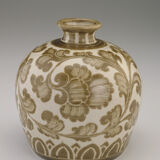 Northern Song Dynasty, porcelain Ding Ware Bottle, 11th-12th century http://thumbsnap.com/vf/ZqcqVhAa.jpg - http://thumbsnap.com/vf/ZqcqVhAa.jpg http://thumbsnap.com/v/d7JG1nmW.jpg"> 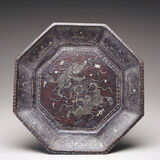 Yuan Dynasty, plastic-dripped lacquer over wooden tray with pearl inlay design, late 13th - early 14th century AD http://thumbsnap.com/vf/d7JG1nmW.jpg - http://thumbsnap.com/vf/d7JG1nmW.jpg http://thumbsnap.com/v/8HOteBda.jpg"> 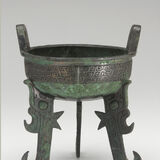 Western Zhou Dynasty, Ritual Food Vessel (Fuding Ding), bronze-ware, dated 11th-10th century BC http://thumbsnap.com/vf/8HOteBda.jpg - http://thumbsnap.com/vf/8HOteBda.jpg http://thumbsnap.com/v/q4AFW71b.jpg"> 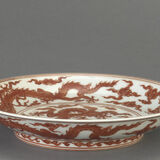 Ming Dynasty, porcelain dish, Xuande Reign, 1426-1435 AD http://thumbsnap.com/vf/q4AFW71b.jpg - http://thumbsnap.com/vf/q4AFW71b.jpg http://thumbsnap.com/v/VqyGUYT3.jpg"> 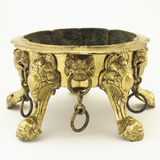 Tang Dynasty, gilded-bronze incense burner, dated 7th-8th century AD http://thumbsnap.com/vf/VqyGUYT3.jpg - http://thumbsnap.com/vf/VqyGUYT3.jpg http://thumbsnap.com/v/Yl9dDUYC.jpg"> 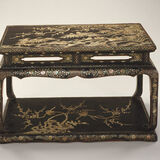 Ming Dynasty, Low Table, plastic-dripped lacquer over wood, gold, silver, and pearl inlay design, late 16th century AD http://thumbsnap.com/vf/Yl9dDUYC.jpg - http://thumbsnap.com/vf/Yl9dDUYC.jpg http://thumbsnap.com/v/ozajagxH.jpg"> 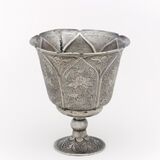 Tang Dynasty, Silver Stem Cup, 700-750 AD http://thumbsnap.com/vf/ozajagxH.jpg - http://thumbsnap.com/vf/ozajagxH.jpg http://thumbsnap.com/v/v7Bl0MUy.jpg"> 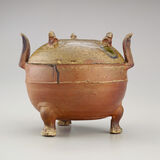 Western Han Dynasty Covered Tripod, stoneware with mostly worn-off green-glaze celadon, 2nd Century BC http://thumbsnap.com/vf/v7Bl0MUy.jpg - http://thumbsnap.com/vf/v7Bl0MUy.jpg http://thumbsnap.com/v/KPrN62ZX.jpg">
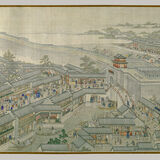 Qianlong Ispection Tour, painted handscroll, mid 18th century http://thumbsnap.com/vf/KPrN62ZX.jpg - http://thumbsnap.com/vf/KPrN62ZX.jpg http://thumbsnap.com/v/LFHVdrMv.jpg"> 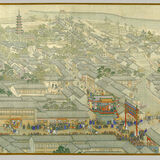 Qianlong Ispection Tour, painted handscroll, mid 18th century http://thumbsnap.com/vf/LFHVdrMv.jpg - http://thumbsnap.com/vf/LFHVdrMv.jpg http://thumbsnap.com/v/iaWfKaZ7.jpg"> 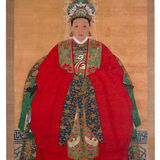 Portrait of Lady Li, 1535 AD, Ming Dynasty Silk Hanging Scroll http://thumbsnap.com/v/iaWfKaZ7.jpg - http://thumbsnap.com/v/iaWfKaZ7.jpg http://thumbsnap.com/v/z644igLM.jpg"> 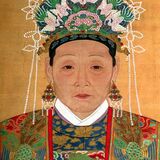 Portrait of Lady Li, 1535 AD, Ming Dynasty Silk Hanging Scroll http://thumbsnap.com/v/z644igLM.jpg - http://thumbsnap.com/v/z644igLM.jpg http://thumbsnap.com/v/Q6LHwAsO.jpg"> 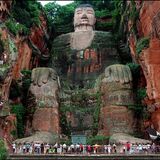 Massive Leshan Buddha Stone Sculpture, 71 meters tall (233 feet), completed in 803 AD, Tang Dynasty; it is the largest stone-carved Buddha in the world http://thumbsnap.com/vf/Q6LHwAsO.jpg - http://thumbsnap.com/vf/Q6LHwAsO.jpg http://thumbsnap.com/v/1OGw5c2m.jpg"> 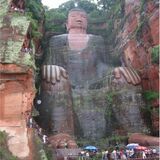 Another image of the massive 9th century Leshan Buddha Sculpture http://thumbsnap.com/vf/1OGw5c2m.jpg - http://thumbsnap.com/vf/1OGw5c2m.jpg http://thumbsnap.com/v/LClz7OR8.jpg"> 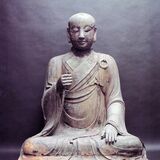 Stone Lohan Buddhist Statue in Meditation, 11th century AD, Northern Song Dynasty http://thumbsnap.com/v/LClz7OR8.jpg - http://thumbsnap.com/v/LClz7OR8.jpg http://thumbsnap.com/v/ydpSW5Gv.jpg"> 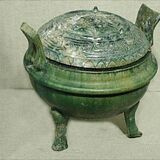 Eastern Han Dynasty Green Glaze Tripod Ding, 1st century AD http://thumbsnap.com/v/ydpSW5Gv.jpg - http://thumbsnap.com/v/ydpSW5Gv.jpg http://thumbsnap.com/v/D37yILXW.jpg"> 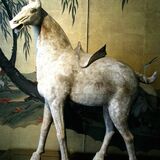 Life-size Horse Sculpture, 8th century, Tang Dynasty, Alberto Manuel Cheung Gallery of Arts http://thumbsnap.com/vf/D37yILXW.jpg - http://thumbsnap.com/vf/D37yILXW.jpg http://thumbsnap.com/v/jCrycg55.jpg"> 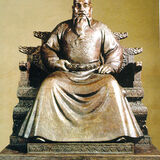 Bronze-Cast Statue of Emperor Yongle (reigned 1402 - 1424 AD), Ming Dynasty http://thumbsnap.com/v/jCrycg55.jpg - http://thumbsnap.com/v/jCrycg55.jpg ------------- |
Posted By: Preobrazhenskoe
Date Posted: 16-Oct-2006 at 13:57
|
HOLY CRAP! The greatest of all these paintings below, click on the link below the description to scan across the entire length of this old 11-meter-long painted handscroll: http://thumbsnap.com/v/TVTPhoTo.jpg"> 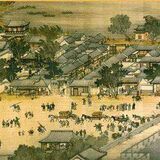 Spring Festival (Qing Ming) on the River, this is an 18th century remake of an 11th century classic by Zhang Zerui http://thumbsnap.com/vf/TVTPhoTo.jpg - http://thumbsnap.com/vf/TVTPhoTo.jpg http://thumbsnap.com/v/OD0lGZSD.jpg"> 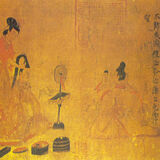 Eastern Jin, Admonitions of the Instructress to the Court Ladies, original copy by Gu Kaizhi, 345-406 AD http://thumbsnap.com/vf/OD0lGZSD.jpg - http://thumbsnap.com/vf/OD0lGZSD.jpg http://thumbsnap.com/v/mHG5FwcP.jpg"> 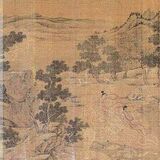 Ancient Eastern Jin Dynasty Landscape Painting original, by the master Luo Shen Fu (lived circa 317-420); this is another long handscroll, so when you click the link directly below, make sure to scan through the whole picture using the scroll bar, it's worth the look! http://thumbsnap.com/vf/mHG5FwcP.jpg - http://thumbsnap.com/vf/mHG5FwcP.jpg http://thumbsnap.com/v/9aoMv5nO.jpg"> 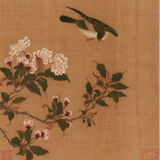 A Bird Hovering over Blossoming Branches, 18th century Qing Dynasty http://thumbsnap.com/vf/9aoMv5nO.jpg - http://thumbsnap.com/vf/9aoMv5nO.jpg http://thumbsnap.com/v/Pip65bC3.jpg"> 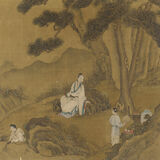 A Man Resting Under Pines; Two Boys Preparing Tea, 16th century AD, Ming Dynasty http://thumbsnap.com/vf/Pip65bC3.jpg - http://thumbsnap.com/vf/Pip65bC3.jpg http://thumbsnap.com/v/eKoV0W9B.jpg"> 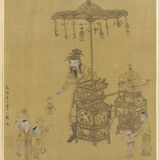 Toy Peddler and Children, 18th century, Qing Dynasty http://thumbsnap.com/vf/eKoV0W9B.jpg - http://thumbsnap.com/vf/eKoV0W9B.jpg http://thumbsnap.com/v/QkZ6i1Ak.jpg"> 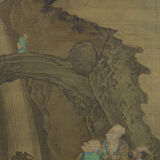 Original and well-preserved painting of Rock Bridge at Tiantai Mountain, by Zhou Jichang, 1178 AD, Southern Song Dynasty http://thumbsnap.com/vf/QkZ6i1Ak.jpg - http://thumbsnap.com/vf/QkZ6i1Ak.jpg http://thumbsnap.com/v/RaMJZ4Tw.jpg"> 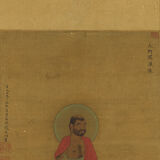 Painting of a Seated Luohan, 16th century AD, Ming Dynasty http://thumbsnap.com/vf/RaMJZ4Tw.jpg - http://thumbsnap.com/vf/RaMJZ4Tw.jpg http://thumbsnap.com/v/UrCRRj8t.jpg"> 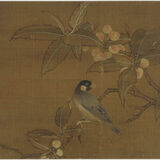 Java Sparrow on a Berry Branch, 15th century AD, early Ming Dynasty http://thumbsnap.com/vf/UrCRRj8t.jpg - http://thumbsnap.com/vf/UrCRRj8t.jpg http://thumbsnap.com/v/P1F2XLF7.jpg"> 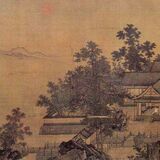 One of the Four Scenes Paintings, by Liu Songnian (1174-1224 AD), Southern Song Dynasty http://thumbsnap.com/vf/P1F2XLF7.jpg - http://thumbsnap.com/vf/P1F2XLF7.jpg http://thumbsnap.com/v/tgTa5lsv.jpg"> 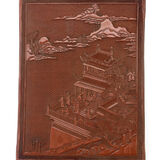 Ming Dynasty, red lacquer box over wood, intricate Chinese pavilion and ocean carving design, Hongzhi Reign (1488-1505) http://thumbsnap.com/vf/tgTa5lsv.jpg - http://thumbsnap.com/vf/tgTa5lsv.jpg http://thumbsnap.com/v/JFe8VIm8.jpg"> 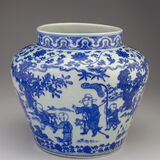 Ming Dynasty, porcelain Guan Shape Vase, intricate scene design of flowers and children playing, Jiajing Reign (1522-1566) http://www.imageshack.com/ - http://www.imageshack.com/ http://thumbsnap.com/v/UpH4mequ.jpg"> 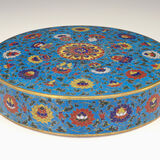 Ming Dynasty, Tibetan buddhist base mandala, enamels on brass, cloisonne, early 15th century, Yongle Reign http://thumbsnap.com/vf/UpH4mequ.jpg - http://thumbsnap.com/vf/UpH4mequ.jpg http://thumbsnap.com/v/iJz2Zr3Z.jpg"> 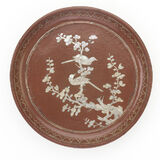 Southern Song Dynasty, red lacquer over wood tray with mother-of-pearl inlay, 13th century http://thumbsnap.com/vf/iJz2Zr3Z.jpg - http://thumbsnap.com/vf/iJz2Zr3Z.jpg http://thumbsnap.com/v/SIXDNaxg.jpg"> 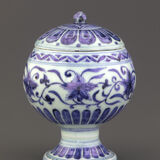 Ming Dynasty, porcelain stem-bowl, Xuande reign, mid 15th century http://thumbsnap.com/vf/SIXDNaxg.jpg - http://thumbsnap.com/vf/SIXDNaxg.jpg http://thumbsnap.com/v/W2igKzgF.jpg"> 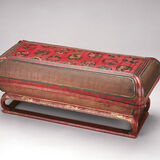 Ming Dynasty, lacquered box with bamboo basketry, silver, gold, polychrome, 1573-1620 AD http://thumbsnap.com/vf/W2igKzgF.jpg - http://thumbsnap.com/vf/W2igKzgF.jpg http://thumbsnap.com/v/p1azU0Nf.jpg"> 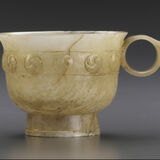 Song Dynasty Jade Cup (Bei), 11th-12th century AD http://thumbsnap.com/vf/p1azU0Nf.jpg - http://thumbsnap.com/vf/p1azU0Nf.jpg http://thumbsnap.com/v/v9ocvQo6.jpg"> 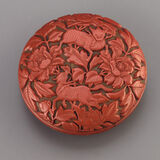 Ming Dynasty, red-lacquer box over wood, intricate lacquer carving, 15th century AD http://thumbsnap.com/vf/v9ocvQo6.jpg - http://thumbsnap.com/vf/v9ocvQo6.jpg http://thumbsnap.com/v/HHckKFvb.jpg"> 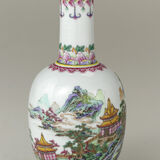 Qing Dynasty, porcelain vase, Qianlong reign (1736-1795) http://thumbsnap.com/vf/HHckKFvb.jpg - http://thumbsnap.com/vf/HHckKFvb.jpg http://thumbsnap.com/v/HQWaFVdA.jpg"> 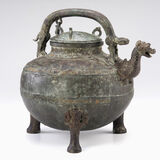 Eastern Zhou Dynasty, ritual wine vessel, bronze-ware, 5th century BC http://thumbsnap.com/vf/HQWaFVdA.jpg - http://thumbsnap.com/vf/HQWaFVdA.jpg Eric ------------- |
Posted By: Preobrazhenskoe
Date Posted: 20-Oct-2006 at 14:17
http://thumbsnap.com/v/JUb0ElQ4.jpg">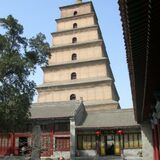 The Big Wild Goose Pagoda, brick construction, 64.5 meters (211.6 feet) high, built in 652 AD under the reign of Emperor Gaozong of the Tang Dynasty. http://thumbsnap.com/vf/JUb0ElQ4.jpg - http://thumbsnap.com/vf/JUb0ElQ4.jpg http://thumbsnap.com/v/daganQUl.jpg"> 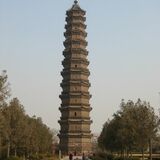 The Iron Pagoda of Youguo Temple, brick construction, 54.66 meters tall, built in 1049 AD in the Northern Song Period of China http://thumbsnap.com/vf/daganQUl.jpg - http://thumbsnap.com/vf/daganQUl.jpg http://thumbsnap.com/v/GN4OClju.jpg"> 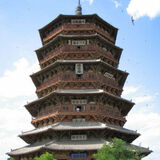 Yingxian Pagoda, 67.31 meters tall, original wood construction, built in 1056 AD, during the Liao/Northern Song Dynasty http://thumbsnap.com/vf/GN4OClju.jpg - http://thumbsnap.com/vf/GN4OClju.jpg http://thumbsnap.com/v/dbSTARZq.jpg"> 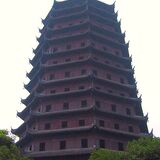 Liu-He Pagoda, brick and wood construction, 59.89 meters tall (roughly 196.5 feet-tall), erected in 1152 AD during the Southern Song Dynasty of China http://thumbsnap.com/v/dbSTARZq.jpg - http://thumbsnap.com/v/dbSTARZq.jpg http://thumbsnap.com/v/2FkizKiB.jpg"> 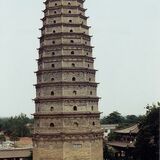 Famen Temple's Real Spirit Pagoda, brick construction, 47 meters tall, built in 1579 AD during the Ming Dynasty in China http://thumbsnap.com/vf/2FkizKiB.jpg - http://thumbsnap.com/vf/2FkizKiB.jpg http://thumbsnap.com/v/OwhLWNgL.jpg"> 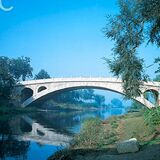 The Anji (or Zhaozhou) Bridge, brick and stone segmental arch bridge, engineered by Li Chun, construction began in 595 AD, and was completed in 605 AD under the Sui Dynasty of China http://thumbsnap.com/vf/OwhLWNgL.jpg - http://thumbsnap.com/vf/OwhLWNgL.jpg http://thumbsnap.com/v/3ZQZibvq.jpg"> 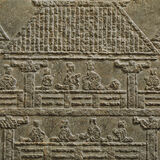 Eastern Han Dynasty Tomb Panel Relief, stone carving, 1st-2nd century AD http://thumbsnap.com/vf/3ZQZibvq.jpg - http://thumbsnap.com/vf/3ZQZibvq.jpg http://thumbsnap.com/v/SQlrceEf.jpg"> 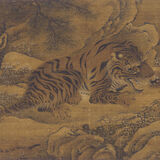 Tiger Under Snowy Pines, silk-scroll painting, early 17th century, Ming Dynasty http://thumbsnap.com/vf/SQlrceEf.jpg - http://thumbsnap.com/vf/SQlrceEf.jpg http://thumbsnap.com/v/uZABFl0e.jpg"> 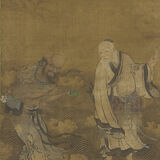 Taoist Immortals Walking on Water, late 14th century AD, early Ming Dynasty http://thumbsnap.com/vf/uZABFl0e.jpg - http://thumbsnap.com/vf/uZABFl0e.jpg http://thumbsnap.com/v/zbFxPJtp.jpg"> 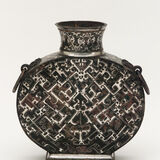 Eastern Zhou Dynasty Pilgrim Flask (Bian Hu), bronze inlaid with silver, 3rd century BC http://thumbsnap.com/vf/zbFxPJtp.jpg - http://thumbsnap.com/vf/zbFxPJtp.jpg http://thumbsnap.com/v/XHyeNSk7.jpg"> 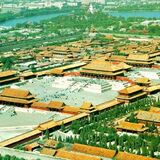 The Forbidden City of Beijing, 720,000 square meters of area, 800 buildings with over 8,600 rooms, construction completed by 1420 AD, under the reign of the Ming Dynasty Emperor Yongle. http://thumbsnap.com/vf/XHyeNSk7.jpg - http://thumbsnap.com/vf/XHyeNSk7.jpg http://thumbsnap.com/v/xFUfSUmU.jpg"> 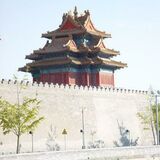 Corner Tower of the Forbidden City http://thumbsnap.com/v/xFUfSUmU.jpg - http://thumbsnap.com/v/xFUfSUmU.jpg http://thumbsnap.com/v/Vmd82CzX.jpg"> 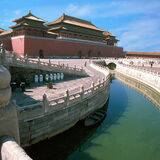 Canal view with palace Meridian Gate entrance of the Forbidden City in the background http://thumbsnap.com/vf/Vmd82CzX.jpg - http://thumbsnap.com/vf/Vmd82CzX.jpg http://thumbsnap.com/v/Rlla75Ch.jpg"> 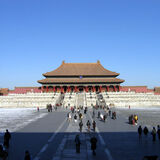 The Hall of Supreme Harmony within Beijing's Forbidden City http://thumbsnap.com/vf/Rlla75Ch.jpg - http://thumbsnap.com/vf/Rlla75Ch.jpg http://thumbsnap.com/v/5RLcobWP.jpg"> 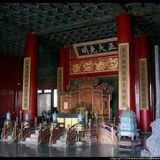 Forbidden City Throne Room http://thumbsnap.com/vf/5RLcobWP.jpg - http://thumbsnap.com/vf/5RLcobWP.jpg http://thumbsnap.com/v/qi9GxwZF.jpg"> 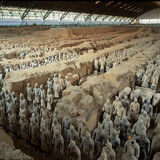 The Terracotta Army of Qin, created and assembled by the year 210 BC by the First Qin Emperor (Qin Shihuangdi), located near modern-day Xian. A total of 8,099 terracotta figures were found in the outlying tombs to his main pyramid mausoleum, the figures including horses, soldiers, generals, and complete with bronze chariots and actual wielded weapons. http://thumbsnap.com/vf/qi9GxwZF.jpg - http://thumbsnap.com/vf/qi9GxwZF.jpg http://thumbsnap.com/v/HCBMq1HN.jpg"> 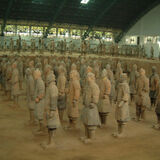 Terracotta Soldiers, 3rd century BC http://thumbsnap.com/vf/HCBMq1HN.jpg - http://thumbsnap.com/vf/HCBMq1HN.jpg http://thumbsnap.com/v/goWhEwYb.jpg"> 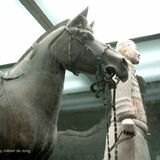 Terracotta Cavalryman holding the reins of his horse, 3rd century BC http://thumbsnap.com/vf/goWhEwYb.jpg - http://thumbsnap.com/vf/goWhEwYb.jpg http://thumbsnap.com/v/AdiS9uve.jpg"> 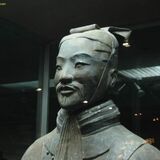 Terracotta Army Officer General http://thumbsnap.com/vf/AdiS9uve.jpg - http://thumbsnap.com/vf/AdiS9uve.jpg http://thumbsnap.com/v/DpRaUxIQ.jpg"> 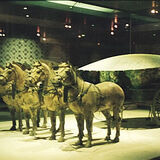 Terracotta Army Bronze Chariot with Terracotta Horses http://thumbsnap.com/vf/DpRaUxIQ.jpg - http://thumbsnap.com/vf/DpRaUxIQ.jpg Eric ------------- |
Posted By: pekau
Date Posted: 21-Feb-2007 at 03:23
|
Wow, excellent efforts! ------------- http://swagbucks.com/refer/Malachi"> 
Join us. |